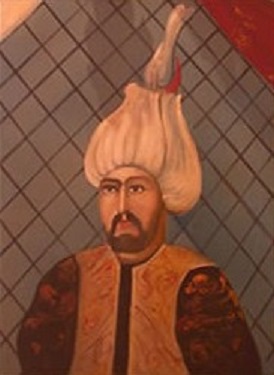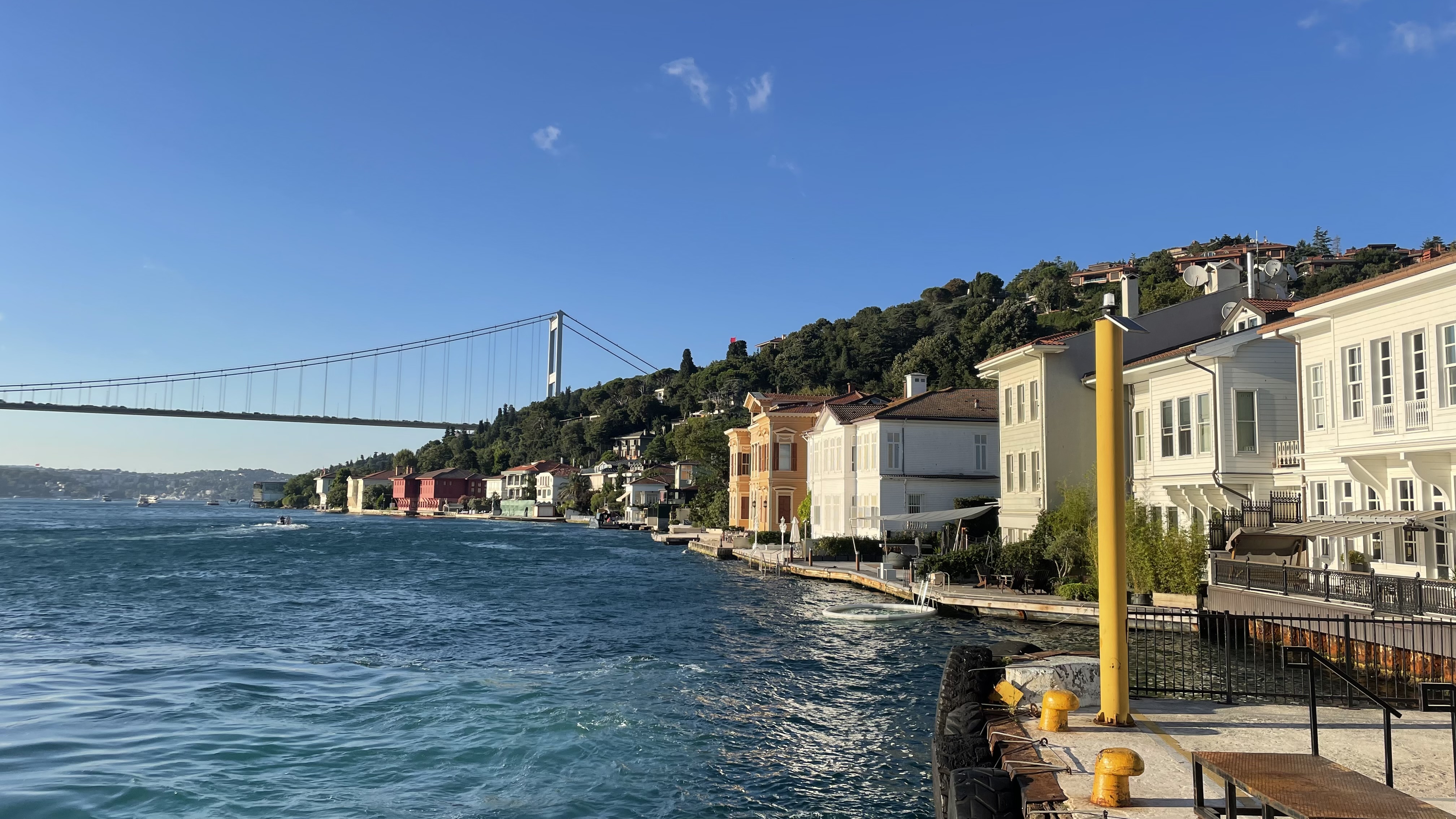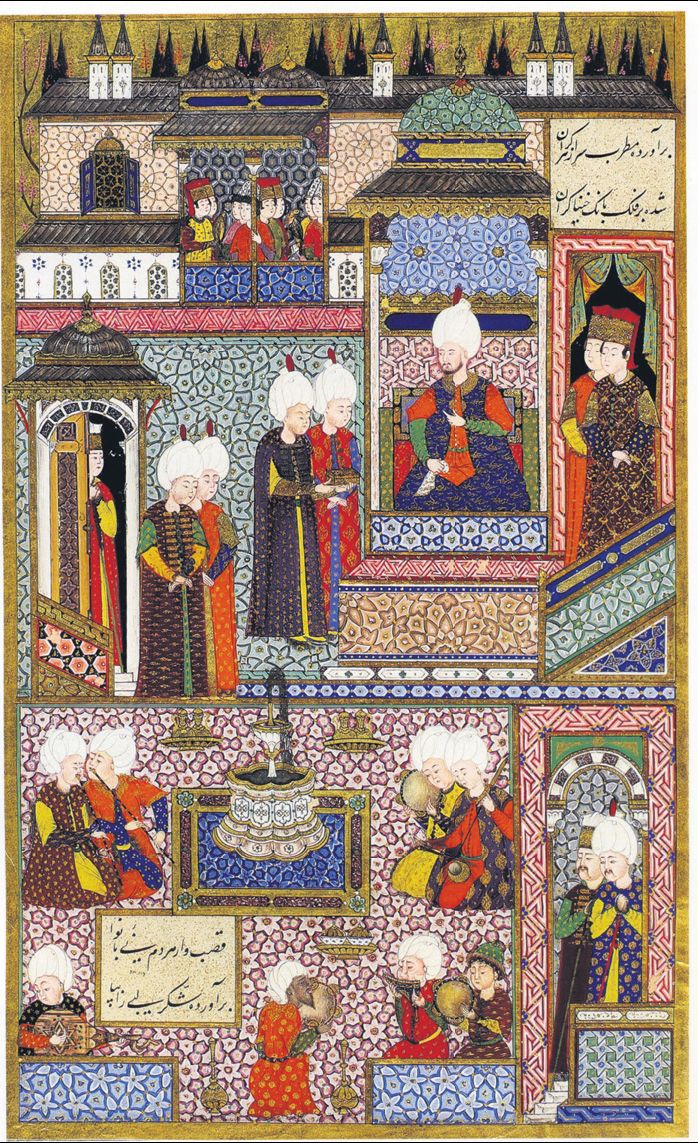|
Ismihan Sultan
Ismihan Sultan (, "''Purity of the Khan''" or ''"Highness of the Khan''"; also Esmehan Sultan; Manisa, 1545 – Costantinople, 8 August 1585) was an Ottoman princess, daughter of Sultan Selim II (reign 1566–74) and his favorite concubine, Haseki Sultan and legal wife Nurbanu Sultan. She was the granddaughter of Suleiman the Magnificent (reign 1520–66) and his favourite consort, Haseki sultan and legal wife Hürrem Sultan, sister of Sultan Murad III (reign 1574–95) and aunt of Sultan Mehmed III (reign 1595–1603) as well as the niece of Mihrimah Sultan. She was also the wife of renowned Ottoman Grand Vizier Sokollu Mehmed Pasha. Early years Ismihan Sultan was born in Manisa in 1545. She was the daughter Şehzade Selim (future Selim II), son of Sultan Suleiman the Magnificent and Hurrem Sultan and his favorite concubine, and later Haseki and legal wife, Nurbanu Sultan. She spent her early life in Manisa and Konya, where her father served as a sanjak-bey. Ismihan w ... [...More Info...] [...Related Items...] OR: [Wikipedia] [Google] [Baidu] |
Sokollu Mehmed Pasha
Sokollu Mehmed Pasha (; ; ; 1505 – 11 October 1579) was an Ottoman statesman of Serb origin most notable for being the Grand Vizier of the Ottoman Empire. Born in Ottoman Herzegovina into an Orthodox Christian family, Mehmed was recruited as a young boy as part of so called "blood tax" to serve as a janissary to the Ottoman devşirme system of recruiting Christian boys to be raised as officers or administrators for the state. He rose through the ranks of the Ottoman imperial system, eventually holding positions as commander of the imperial guard (1543–1546), High Admiral of the Fleet (1546–1551), Governor-General of Rumelia (1551–1555), Third Vizier (1555–1561), Second Vizier (1561–1565), and as Grand Vizier (1565–1579, for a total of 14 years, three months, 17 days) under three sultans: Suleiman the Magnificent, Selim II, and Murad III.Imamović, Mustafa (1996). Historija Bošnjaka. Sarajevo: BZK Preporod. He was assassinated in 1579, ending his near 15-years ... [...More Info...] [...Related Items...] OR: [Wikipedia] [Google] [Baidu] |
Mehmed III
Mehmed III (, ''Meḥmed-i sālis''; ; 26 May 1566 – 22 December 1603) was the sultan of the Ottoman Empire from 1595 until his death in 1603. Mehmed was known for ordering the execution of his brothers and leading the army in the Long Turkish War, during which the Ottoman army was victorious at the decisive Battle of Keresztes. This victory was however undermined by some military losses such as in Győr and Nikopol. He also ordered the successful quelling of the Jelali rebellions. The sultan also communicated with the court of Elizabeth I on the grounds of stronger commercial relations and in the hopes of England to ally with the Ottomans against the Spanish. Early life Mehmed was born at the Manisa Palace on 26 May 1566, during the reign of his great-grandfather, Suleiman the Magnificent. He was the son of Murad III, himself the son of Selim II, who was the son of Sultan Suleiman and Hurrem Sultan. His mother was Safiye Sultan, an Albanian from the Dukagjin Highlan ... [...More Info...] [...Related Items...] OR: [Wikipedia] [Google] [Baidu] |
Mehmed V
Mehmed V Reşâd (; or ; 2 November 1844 – 3 July 1918) was the penultimate List of sultans of the Ottoman Empire, sultan of the Ottoman Empire from 1909 to 1918. Mehmed V reigned as a Constitutional monarchy, constitutional monarch. He had little influence over government affairs and the Constitution of the Ottoman Empire, Ottoman constitution was held with little regard by his Ministry (government department), ministries. The first half of his reign was marked by increasingly polarizing politics, and the second half by war and domination of the Committee of Union and Progress and the Three Pashas. Reşad was the son of Sultan Abdülmecid I. He succeeded his half-brother Abdul Hamid II after the 31 March Incident. Coming to power in the aftermath of the failed coup attempt, his nine-year reign featured three coups d'etat, four wars, eleven governments, and numerous uprisings. The Italo-Turkish War saw the cession of the Empire's North African territories and the Dodecanese I ... [...More Info...] [...Related Items...] OR: [Wikipedia] [Google] [Baidu] |
Rukiye Sultan
Rukiye Sultan ( "''charm''", 11 October 1906 20 February 1927) was an Ottoman princess, the daughter of Şehzade Mehmed Ziyaeddin, son of Mehmed V. Early life Rukiye Sultan was born on 11 October 1906 in the Dolmabahçe Palace. Her father was Şehzade Mehmed Ziyaeddin, son of Sultan Mehmed V and Kamures Kadın, and her mother was Ünsiyar Hanım. She was the third child and daughter of her father and the second child of her mother. She had a sister, Dürriye Sultan, one year elder then her, and a brother Şehzade Mehmed Nazım, four years younger than her. In 1915, she began her education with her sister and brother. Their teacher was Safiye Ünüvar, who taught them the Quran. In 1918, after the death of her grandfather, she moved to her father's villa located at Haydarpasha, she occupied the first floor with her mother and sister. Marriage In 1922, the empire was abolished and on 29 October 1923, Turkey was officially declared as a republic, after which the imperial family ... [...More Info...] [...Related Items...] OR: [Wikipedia] [Google] [Baidu] |
Hümaşah Sultan (daughter Of Şehzade Mehmed)
Hümaşah Sultan (, "''phoenix of the Şah''"; 1543-1582), also known as Hüma Sultan, was an Ottoman princess, the daughter of Şehzade Mehmed (1521–1543) and the granddaughter of Sultan Suleiman the Magnificent of the Ottoman Empire, and his favourite consort and legal wife Hurrem Sultan. Early life Hümaşah Sultan was born in Manisa in 1543, where her father Şehzade Mehmed served as sanjakbey. He was the eldest child of Suleiman the Magnificent and his consort Hürrem Sultan. She was her father’s only child, and her mother was a concubine, Aya Hatun. Following her father's death in 1543, shortly after her own birth, she was taken under the care of her grandmother Hürrem Sultan and moved to Constantinople. Like her cousin Ayşe Hümaşah Sultan, daughter of Mihrimah Sultan (younger sister of Hümaşah's father), she was reportedly beloved by their grandfather, Sultan Suleiman, with whom she kept correspondence. Hümaşah, her cousin Ayşe, and her aunt Mihrimah would ... [...More Info...] [...Related Items...] OR: [Wikipedia] [Google] [Baidu] |
Catherine De' Medici
Catherine de' Medici (, ; , ; 13 April 1519 – 5 January 1589) was an Italian Republic of Florence, Florentine noblewoman of the Medici family and Queen of France from 1547 to 1559 by marriage to Henry II of France, King Henry II. She was the mother of French kings Francis II of France, Francis II, Charles IX of France, Charles IX, and Henry III of France, Henry III. She was a cousin of Pope Clement VII. The years during which her sons reigned have been called "the age of Catherine de' Medici" since she had extensive, albeit at times varying, influence on the political life of France. Catherine was born in Florence to Lorenzo de' Medici, Duke of Urbino, and Madeleine de La Tour d'Auvergne. In 1533, at the age of 14, Catherine married Henry, the second son of King Francis I of France, Francis I and Queen Claude of France, who would become Dauphin of France (heir to the throne) upon the death of his elder brother Francis III, Duke of Brittany, F ... [...More Info...] [...Related Items...] OR: [Wikipedia] [Google] [Baidu] |
Henry III Of France
Henry III (; ; ; 19 September 1551 – 2 August 1589) was King of France from 1574 until his assassination in 1589, as well as King of Poland and Grand Duke of Lithuania from 1573 to 1575. As the fourth son of King Henry II of France, he was not expected to inherit the French throne and thus was a good candidate for the vacant throne of the Polish–Lithuanian Commonwealth, where he was elected monarch in 1573. During his brief rule, he signed the Henrician Articles into law, recognizing the szlachta's right to freely elect their monarch. Aged 22, Henry abandoned Poland–Lithuania upon inheriting the French throne when his brother, Charles IX, died without issue. France was at the time plagued by the Wars of Religion, and Henry's authority was undermined by violent political factions funded by foreign powers: the Catholic League (supported by Spain and the Pope), the Protestant Huguenots (supported by England and the Dutch) and the Malcontents (led by Henry's own ... [...More Info...] [...Related Items...] OR: [Wikipedia] [Google] [Baidu] |
Safiye Sultan (wife Of Murad III)
Safiye Sultan (; 1550 – ''post'' 1619) was the Haseki Sultan of the Ottoman Sultan Murad III and Valide Sultan as the mother of Mehmed III. Safiye was one of the eminent figures during the era known as the Sultanate of Women. She lived in the Ottoman Empire as a courtier during the reigns of at least seven sultans: Suleiman the Magnificent, Selim II, Murad III, Mehmed III, Ahmed I, Mustafa I and Osman II. After the death of Selim II in 1574, Murad took the throne as the new sultan in Constantinople. Safiye was by his side and moved with him to Topkapi Palace; less than a year into his reign she received the title of Haseki Sultan and was given a higher rank than the sultan's own sisters, Şah Sultan (daughter of Selim II), Şah Sultan, Gevherhan Sultan (daughter of Selim II), Gevherhan Sultan, Ismihan Sultan and Fatma Sultan (daughter of Selim II), Fatma Sultan. Nurbanu Sultan, Murad's mother, was upset with Safiye's influence on Murad, and wanted to replace her with another ... [...More Info...] [...Related Items...] OR: [Wikipedia] [Google] [Baidu] |
Üsküdar
Üsküdar () is a municipality and district of Istanbul Province, Turkey. Its area is 35 km2, and its population is 524,452 (2022). It is a large and densely populated district on the Anatolian (Asian) shore of the Bosphorus. It is bordered to the north by Beykoz, to the east by Ümraniye, to the southeast by Ataşehir and to the south by Kadıköy; with Karaköy, Kabataş, Beşiktaş, and the historic Sarayburnu quarter of Fatih facing it on the opposite shore to the west. Üsküdar has been a conservative cultural center of the Anatolian side of Istanbul since Ottoman times with its landmark as well as numerous tiny mosques and dergahs. Üsküdar is a major transport hub, with ferries to Eminönü, Karaköy, Kabataş, Beşiktaş and some of the Bosphorus suburbs. Üsküdar is a stop on the Marmaray rail service at the point where it starts its journey under the Bosphorus, re-emerging on the European side at Sirkeci. Via Marmaray, Üsküdar is linked to Gebz ... [...More Info...] [...Related Items...] OR: [Wikipedia] [Google] [Baidu] |
Şehzade Bayezid
Şehzade Bayezid (; 1527 – 25 September 1561) was an Ottoman prince as the son of Sultan Suleiman the Magnificent and Hürrem Sultan. Early years Bayezid was born in 1527 in Constantinople during the reign of his father, Suleiman the Magnificent. His mother was Hürrem Sultan, an Orthodox priest's daughter, who was the current Sultan's concubine at the time. In 1533 or 1534, his mother, Hürrem, was freed and became Suleiman's legal wife.Kinross, Patrick (1979). The Ottoman centuries: The Rise and Fall of the Turkish Empire. New York: Morrow. . p, 236. He had four brothers, Şehzade Mehmed, Şehzade Selim (future Selim II), Şehzade Abdullah and Şehzade Cihangir, and a sister Mihrimah Sultan. Between 26 November and 8 December 1539, a ceremony was held and celebrating circumcision of Bayezid and his younger brother Cihangir. The entire city and palace were involved in the elaborate event. Representatives from Ferdinand I, Holy Roman Emperor, the French, and the Venetia ... [...More Info...] [...Related Items...] OR: [Wikipedia] [Google] [Baidu] |
Şah Sultan (daughter Of Selim II)
Şah Sultan (, "''Sovereign''"; 1543 – 3 November 1580) was an Ottoman Dynasty, Ottoman princess, the daughter of Selim II (reign 1566–74) and Nurbanu Sultan. She was the granddaughter of Suleiman the Magnificent (reign 1520–66) and his consort Hurrem Sultan, sister of Sultan Murad III (reign 1574–95) and aunt of Sultan Mehmed III (reign 1595–1603). Life Şah Sultan was born in 1543 in Karaman, when her father was still a prince. Her mother was Nurbanu Sultan. She was the eldest child of her parents. In 1562, strong alliances were made for the daughters of Şehzade Selim, the prince who would succeed Suleiman as Selim II. On 17 August 1562, Ismihan Sultan, Ismihan married Sokollu Mehmed Pasha, Gevherhan Sultan (daughter of Selim II), Gevherhan the admiral Piyale Pasha, and Şah the chief falconer Hasan Agha. The State Treasury covered the expenses for the imperial wedding and granted 15,000 florins as a wedding gift to the imperial son-in-law. Şah and Hasan didn't ha ... [...More Info...] [...Related Items...] OR: [Wikipedia] [Google] [Baidu] |
Piyale Pasha
Piali Pasha (; ) (–1578) was an Ottoman Grand Admiral (Kapudan Pasha) between 1553 and 1567, and a Vizier (minister) after 1568. He is also known as Piale Pasha in English. Early life His exact place of birth is unknown, though he was probably born in Hungary. He was of Hungarian or Croatian origin. It is said that Piali was the son of a shoemaker from Tolna, a Hungarian shoemaker according to Hidden, who speaks of the son of a "Hungarian shoemaker" as early as 1912, or of a Croatian according to a 2007 entry in the TDV Islam Encyclopedia. He would become a soldier and be captured by the Ottomans in the Hungarian battlefields (in the 1526 Battle of Mohács). Piyale Pasha received his formal education at the Enderun School (Imperial Academy) in Constantinople (modern-day Istanbul), Ottoman Empire. He graduated from the Enderun with the title of '' Kapıcıbaşı'' and was appointed ''Sanjak Bey'' (Province Governor) of Gallipoli. Admiral of the Ottoman Fleet He was prom ... [...More Info...] [...Related Items...] OR: [Wikipedia] [Google] [Baidu] |







